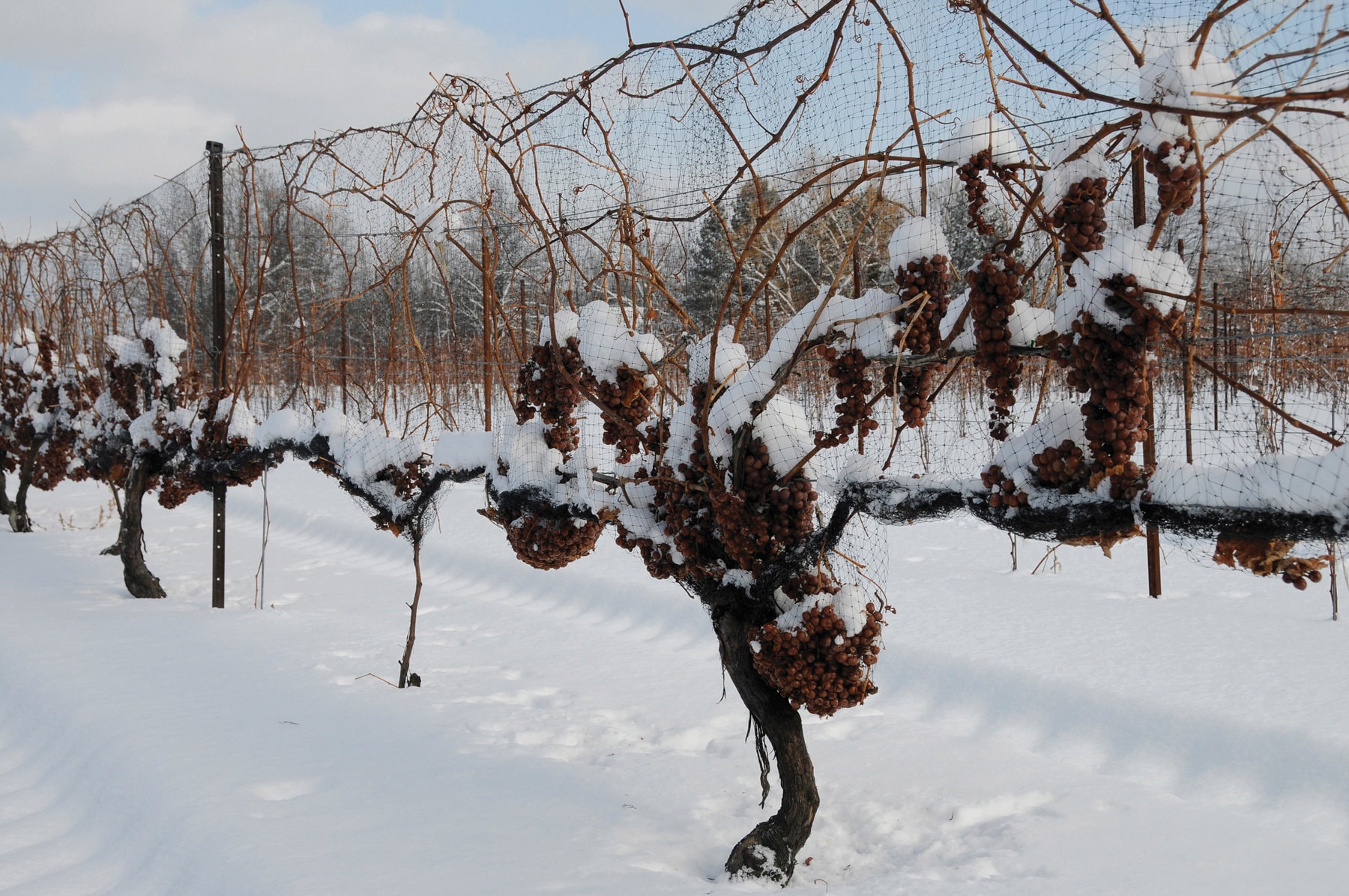Niagara-on-the-Lake’s wineries have wrapped up another month of harvest for icewine production, collecting tons of frozen grapes during last month’s cold snap.
At Inniskillin on Niagara Stone Road, its lead winemaker says while the industry took a hit during the pandemic, this year he’s seeing a resurgence in interest around icewine — corresponding with, for them, a successful harvest.
As part of the annual Icewine Festival, Inniskillin hosted a vineyard tour and allowed guests to taste this winter’s harvested icewine grapes and their raw juice.
Winemaker Nicholas Gizuk showed guests the ins and outs of icewine production during a harvest and brunch.
“The traffic and the vibe around icewine this year is the best I’ve seen it in a long time,” he said.
In its 2022 annual report, VQA Ontario reported that icewine production in the province has been steadily declining over the last five years, with two significant drops in 2019 and 2022.
In 2022, the amount of icewine made in Ontario was 111,614 litres, down from 502,082 litres in 2021.
Asked if this year’s milder winter made for a more challenging icewine harvest season, Gizuk said, “I would consider 2021 way more challenging of a season than it is currently,” due to a tough harvest season for table wine grapes at the turn of autumn.
At the end of 2023, however, VQA Ontario reported a significant increase in grapes harvested for icewine, at 4,095 tonnes compared to the 2022 vintage’s 765 tonnes.
Despite the unseasonably mild start to this year’s winter, Gizuk said harvest and grape pressing production began within the typical harvest period at Inniskillin — the first three weeks of January.
“Our yields are basically on spec for what we contracted,” he said. “It was actually a little bit heavier than what we anticipated, which is good.”
According to VQA Ontario standards, temperatures have to fall below -8 C before grapes are ready for icewine harvesting.
Gizuk, however, prefers to hold out a little bit longer – until the temperature to hit -10 C.
“I like waiting till -10, till my grapes are frozen solid all the way through,” he said. “Gives me a little bit more control over the juice on the back end.”
Thanks to the polar vortex, which Gizuk saw coming in the forecast, Niagara hit that temperature the night of Jan. 14.
The team spent a week harvesting and pressing icewine grapes, finishing on Jan. 21.
Those who held out for cold temperatures before harvest found a benefit in one specific area: a higher Brix value – the amount in degrees of dissolved sugar in a liquid solution.
The VQA standard level for the juice is 35 degrees after pressing when harvested at -8 C.
Since Gizuk waited until -10 C, this year’s juice is looking at a Brix value of 38 to 42, which also means a lower alcohol percentage than that of a 35 Brix value variety — 9.5 per cent alcohol instead of 12 per cent.
“That’s where the artistry comes in where everybody can make them differently,” he said.
Based on what the winemaking team has tasted of the juices so far, Gizuk said he’s excited to see what sort of icewine they’ll produce.
The Vidal, Gizuk said, has an “overly abundant mandarin, orange peel, clementine” taste. “It’s a little more citrus-driven this year.”
The same citrus theme comes forward in the Riesling, assistant winemaker Sydney Agbay said, and it tastes like a “much more concentrated version of the table wine” with flavours of lemon-lime and apricot.
As for the reds, she described the Cabernet Sauvignon as a “dark plum,” “very rich” and “velvety,” while the Cabernet Franc is similar, but more comparative to light red fruits.
“It’s more like the raspberry, strawberry (and) cranberry, if you took it and turned it into jam … They’re really good,” Agbay said.
Two years removed from Ontario’s last pandemic lockdown, Gizuk said he’s starting to see more cars sporting Quebec and American licence plates back in town and a big uptick in tourism, continuing from last summer’s resurgence.
“It’s very impressive to see how many people are actually coming out to try icewine again,” he said.
Plus, with most air travel restrictions lifted and more traffic in airports, one of the big markets for icewine sales is making a comeback – those who purchase wine through airlines and airport shops.
“It’s not something you can go on Amazon and buy,” he said. “It’s still something that you need to go to a shop, go to a store and see and try and get that real, visceral experience.”
The winery is keeping the icewine celebration going this February with its free light display experience every Friday and Saturday from 5 to 8 p.m., until Feb. 24.
Inniskillin’s latest icewine collection will be available sometime later this spring, with bottling taking place in April and May.










